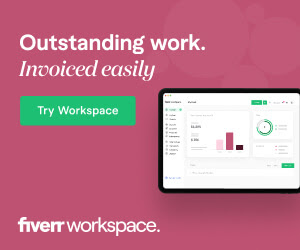Today we'll discuss about aggregation system & ho and 4G+ works we'll know how it's able to deliver a better 4G experience
Carrier Aggregation
Now the question is this carrier aggregation?-Analysis of its name like various technical terms but within its name. The word aggregation in English means unification This means that the technology of integrating multiple careers is called carrier aggregation. But wait, it doesn't end there. Much remains to be said about carrier aggregation. Although these things are very complicated and technical. But, fortunately we are here we'll try to make everything as simple as we can.
How, first, we need to know how your phone uses 4G technology. In Bangladesh, 4G services are available using there bands. 900Mhz, 1800Mhz, and 2100Mhz - 4G but many bands supports which was not seen in previous 2G or 3G technology. This is why it is called LTE or long Term Evolution. So that this service can be provided through different frequency bands.
In the past, mobile operators used 2G or GSM services using the bands of 900 MHz and possible 1600 MHz. But when 3G comes, they have to adopt 2100 MHz. But there is no need to use any specific band for the 4G service, it supports different bands, so it is possible to provide 4G service from existing bands.
4G band support is really unmatched, our country basically provides 3G using 3 bands but it supports many more bands. Such as - 1900Mhz, 1700Mhz, 2600Mhz, many more bands. You can see the details here.
So, what usually happens is suppose your operator is providing 4G service using 1800Mhz band, now your phone will connect to 1800Mhz band and give you 4G experience, simple. Many operators such as Robi/ Airtel offer 4G service using two bands of 900Mhz and 1800Mhz simultaneously. 900 MHz provides particularly long coverage and 1600 MHz provides high data speeds. But the coverage area of 1600 MHz is less. This is a special feature of wireless technology. Suppose, if you keep a wire straight, it will be bigger in size, but the more you twist the wire, the smaller it will be, simple!
What happens now is that when you are in the room the 1600 MHz signal gets much less so the phone gets connected to 900 MHz. Since mobile devices are designed to receive better signals. You may have noticed that when 4G is weak in your location, the phone automatically goes into 3G or 2G mode. The phone always tries to stay connected to the network to get the best signal.
Now your phone is either taking 4G using 900 band at a time or using 1600 band, where the signal is getting stronger. But how is it? Suppose your phone can be connected to 1800 + 900 band at the same time, but it is getting double channel, so it is possible to get more coverage and speed than before, right?
Yes, this is exactly what the career advancement system works on. The technique of providing more bandwidth than just joining one band at a time rather than joining multiple bands or multiple carriers is called carrier aggregation. Your phone may be connected to two or more carriers, in which case the bands may be completely different or may be connected to multiple carriers in the same band. Simply put, it’s like using two or three internet connections at the same time. In that case, you can understand that the speed will be high.
4G + Network
It is possible to provide a better 4G experience by using the carrier aggregation technique. Typically a single 4G carrier can provide bandwidth up to a maximum of 20 MHz. But through carrier can be increased up to 100 MHz. This creates an updated 4G network, also called 4G + or LTE + network.
Suppose you were using 16g band 4G o an single channel, which would support bandwidth up to maximum of 20 MHz. Suppose you were getting 100 megabits of speed (although this is a fantasy for us, so I told you to keep it in mind). Now if you connect to two more carriers thorough carrier aggregation, 2-3times the speed an be provided effortlessly. In that case, you can consume bandwidth from 3link.
There are basically two ways to aggregate a career. The first is called Intra-band Carrier Aggregation, where a single band can be used to split the band into a maximum of two parts, but the signal has to be quite wide. This is what most operators want to implement because it is much easier to set up and cost less. Signals can be transmitted from just a single transceiver.
Similarly, there is another system that is slightly different, here also work is done using same band but same band signal is sent from the separate transceiver because even after same band they behave as a single carrier. Making this system is a little more complicated and expensive.
The second system is inter-band non-contiguous, in which the signals of different bands are sent from completely different band transceivers. Which one sends 900 MHz signal which one 1800 and which one sends 2100 MHz signal. Such a system is much more complex but its efficiency is a little higher. With operators having to deal with more challenges as separate transceivers are needed later.
How to use carrier aggregation?
I realized that it is possible to fix the slow 4G speed through carrier aggregation. But how can that be used? – Now in this case there must be support from both sides. First of all, your mobile operator needs to support carrier aggregation, which means they need to provide a 4G + network. Second, your phone must be carrier forwarding supported or (CA) supported
Supporting carrier aggregation is a hardware issue. It is important to have support from your phone chip. If not, you will not be able to enable carrier progress using any software. If your phone is not too old then 4G + should be supported. If LTE-A or CAT6 LTE is mentioned in the specification of the phone then your phone is 4G + supported.
Now you need to know if your operator supports 4G +. As far as I know, Grameenphone and Banglalink only provide 4G in 1600 MHz band. I don’t know about Banglalink but Grameenphone supports 4G + in some areas. Robi / Airtel, on the other hand, supports 4G in both 900 MHz and 1600 MHz bands. They used to support carrier aggregation but now I see a single band working on 4G. However, in some areas, I still see 4G + support.
You can easily check yourself, whether your operator supports 4G +. Basically, 4G + icon e shows on many phones. However, from an app called Netmonster, you can easily find out which band your operator is providing 4G and whether they have carrier advancement support.
Here my operator Airtel has single band 4G with no carrier progress support. If supported, it would look like the screenshot below, with 1800 + 900, 2CC text, or 3CC text will appear in the status bar of the phone.
So this was a detailed discussion on carrier aggregation and 4G + network. Yeah Al that sounds pretty crap to me, Looks like BT aint for me either. Things like carrier aggregation cannot be confined to one article and many technical terms will come up which will require writing separate articles. In simple language, you will get the whole idea here. But if anyone needs more detailed information, you can see this link.























0 মন্তব্যসমূহ